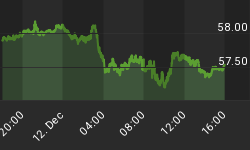The "micro-mini" recession I wrote about last summer ended ahead of the fall stock market rally and gave a much-needed lift to the U.S. economy during the critical fourth quarter. This gave economists and financial commentators something to talk about heading into early 2005 as many of them had incorrectly assumed the economic numbers would be dismal for the year.
Our indicators painted an entirely different picture, of course, one that was accurately reflected in the numbers that later came out after-the-fact. The mini-recession of mid-2004 was simply a blip on the radar screen that was easily detectable in advance simply by following the Federal Reserve's own published statistics. It doesn't take a high-level economist to figure this stuff out (although ironically enough, most of the economists don't seem to have a clue when it comes to forecasting recessions even though they have a high level of education).
Probably the best indicator for predicting recessions (or at least slowdowns) in advance is the 3-month rate of change in the money stock figures published by the Fed. A 10-month rate of change indicator works as well but not with the same "heads-up" accuracy as the 3-month chart. Thankfully, this chart is available to anyone who wants to see it free of charge at the invaluable BullandBearwise web site (www.bullandbearwise.com).

Chart courtesy of BullandBearWise.com
It may seem kind of hard to read this chart what with all the volatility and whippiness it contains. But it's actually quite simple: just note the extreme dips and/or spikes in the money supply rate of change and you can estimate in advance the approximate amount of time you can expect either a slowdown or a pick-up in economic activity, depending on whether the rate of change was to the upside or the downside.
Now take a look at the above chart and see for yourself that yet another micro-mini recession was in the works based on the second downswing in the money supply rate of change. This minor slowdown we are actually starting to feel right now. You won't hear the mainstream economists or talking heads on the financial news shows talking about but it's effects are already discernable. I've surveyed a number of retailers and small business owners who tell me of an acute (albeit recent) downswing in orders, especially credit card purchases. Of course this can usually be expected in the weeks following the holidays, but I'm told that this year it's a little worse than normal. A recent newspaper article headlined "Consumer contend with holiday debt hangover" underscores this.
This isn't surprising given the recent pullback in consumer credit -- see chart below. This measurement is somewhat skewed by the fact that more people are paying off outstanding charge card balances each month but it's still pretty severe on a short-term basis. I believe this is a result of the 3-year campaign organized by creditors nationwide designed to get consumers to pay down their outstanding balances from the late '90s/early 2000 consumer credit spending glut. The get-out-of-debt-now trend is highlighted by a soon-to-be-published book entitled "Credit Hell: How to Dig Out of Debt," by Howard Dvorkin.

Chart courtesy of BullandBearWise.com
In a consumer-based country such as the U.S., a contraction in credit can potentially be the "kiss of death" to the economy. The question is, "Will the Fed attempt to make this slow transition as painless as possible in order to avoid upsetting the proverbial applecart?" The National Retail Federation (NRF) doesn't think so. This group recently forecast that U.S. retail sales growth will slow in 2005 compared with last year. The NRF feels that higher energy costs, slow wage growth and lack of economic stimulus will combine to offset retail sales in the year ahead. The NRF's bearish outlook for consumer spending, which accounts for more than two-thirds of the U.S. economy, comes in spite of stores reporting robust sales during the critical holiday spending period. Is the NRF looking at the Fed money supply rate of change in making this forecast? It will be interesting to see if they are correct.
So the latest micro-mini recession is here already, although I expect it to last even less than the one last summer. By March I expect we'll see improvement and a recovery in the credit-based sectors of the economy. This is also forecast in the money supply rate of change.
However, around mid-summer we'll likely have yet another micro-mini recession based on the monetary statistics. This will be exacerbated by the fact that the Kress master cycle of 120 weeks is due to come down hard this summer. If this materializes it will mean a triple-dip micro-mini recession (as per the headline of this article). That would be three slowdowns in a one-year period. Such a herky-jerky progression is going to leave many in this economy feeling "car sick" unfortunately.
But the bigger question will be, "What does this mean for the 2006 economic outlook? Will a triple-dip be merely a negligible measure designed at fine-tuning the economic recovery? Or will it have more ominous implications? That question we will take up in a future article.
















